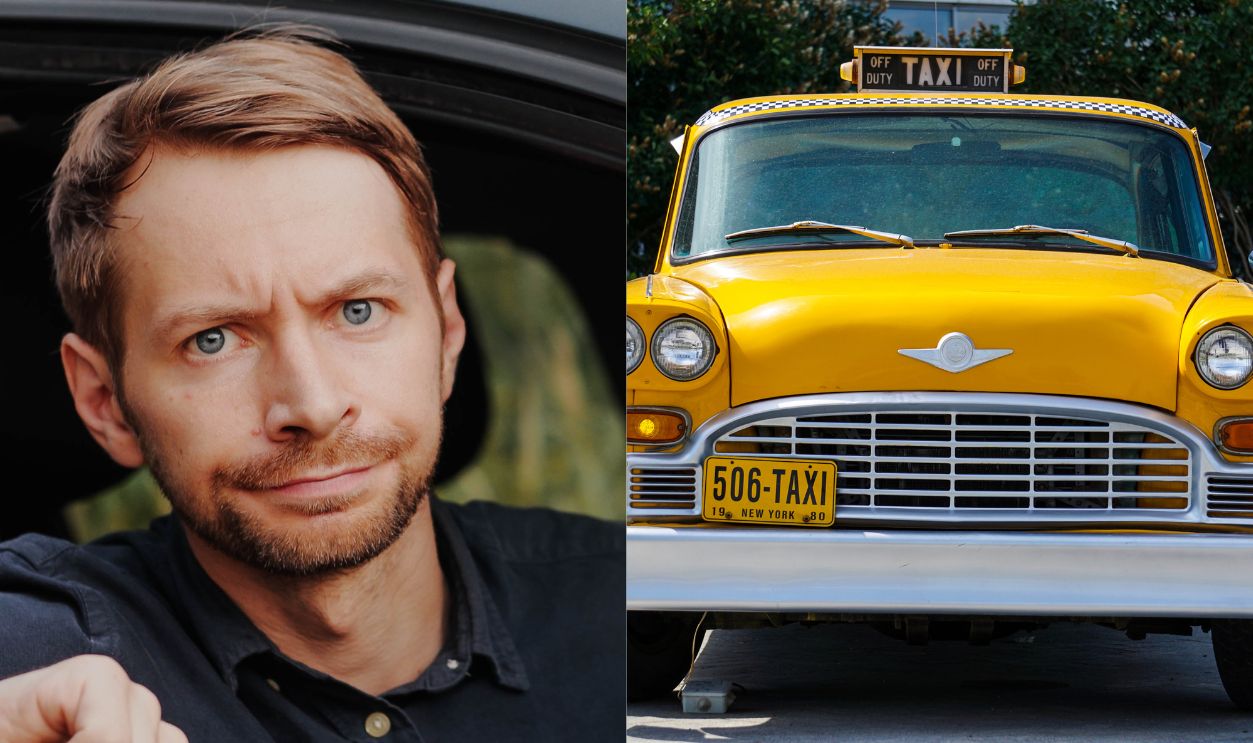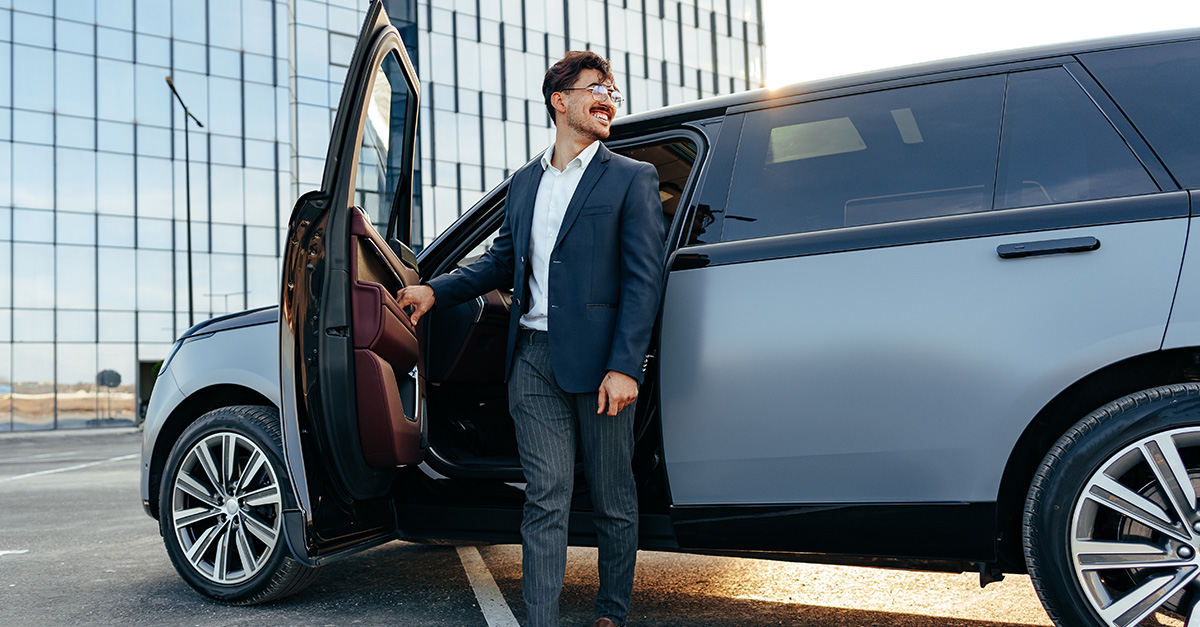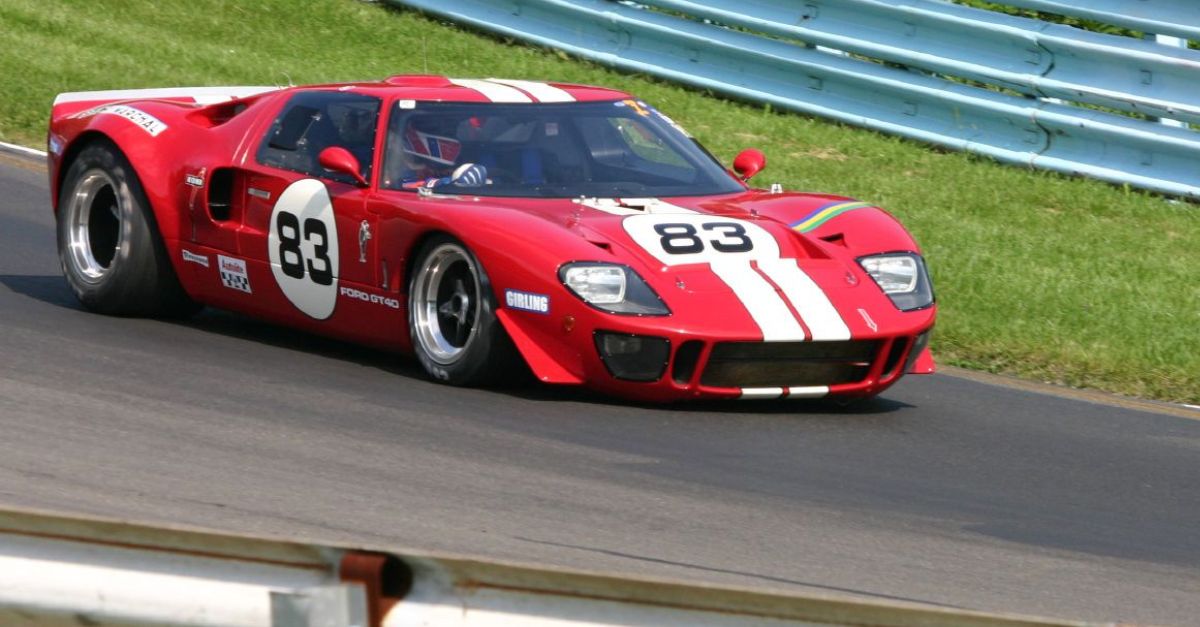America And Her Yellow Taxicabs
How did a mere mode of transportation become one of America's most recognizable national treasures? Let's check out which cabs have rejected passengers since the very beginning.

The Best Taxicabs Used In The United States
A century has passed since Americans first taxied in horse-drawn carriages, but the taxi industry is still active. People still need to get around quickly and easily. Despite moving to modern rides, personal cars, and motorcycles, the stories of iconic taxicab models are worth telling.
 Matt Kieffer, CC BY-SA 2.0, Wikimedia Commons
Matt Kieffer, CC BY-SA 2.0, Wikimedia Commons
Taxicabs In The Early Days (1900s – 1920s)
America's first taxicabs were horse-drawn until motorized taxis with taximeters came around. Management companies like the Electric Vehicle Company and New York Taxicab Company also popped up. Before the era elapsed, gasoline-powered vehicles became the norm. They were faster, more efficient, and had more range.
 Bundesarchiv, Bild, CC-BY-SA 3.0, Wikimedia Commons
Bundesarchiv, Bild, CC-BY-SA 3.0, Wikimedia Commons
The Origin Of Taxicabs
Although historians say the first horse-drawn carriage for hire appeared in London in the 1600s, taxi stands didn't appear until 1636. Before labor unrest put Harry Allen out of business, he'd created the New York Taxicab Company in 1907 and put "taxicab" out in the world.
 Unknown Author, Wikimedia Commons
Unknown Author, Wikimedia Commons
Their Choice Of Color Wasn't Random
John Hertz deserves the most credit for making yellow the official color of American taxis. After founding the Yellow Cab Company in 1915, Hertz painted his entire fleet yellow. He banked on a study showing that passengers in busy cities could notice it more.
 John Margolies, Wikimedia Commons
John Margolies, Wikimedia Commons
Hertz Wasn't The First To Use Yellow Cabs
While Hertz's wide adoption made yellow the iconic color for US taxicabs, it wasn't a novel decision. Albert Rockwell had already used yellow for his taxis in 1908; however, his choice wasn't scientific or research-based. The charming man was inspired by his wife's love for the color.
 Unknown Author, Wikimedia Commons
Unknown Author, Wikimedia Commons
Ford Built The Cost-Effective Model T
In 1907, Henry Ford flooded the taxi industry with mass-produced, affordable Model T vehicles. Taxi drivers embraced the switch from animals to vehicles because of lower operating costs and easy maintenance. A Manhattan driver, Max Eller, even reported a 200% income increase in 1908.
 Driving a Ford Model T Is a Lot Harder Than You'd Think! We Tried It by Bloomberg Originals
Driving a Ford Model T Is a Lot Harder Than You'd Think! We Tried It by Bloomberg Originals
It Soon Became A Common Taxi Model
Besides cheaper prices, Model Ts could withstand the daily demands of taxi service. It also weighed less with an efficient engine. As if that's not enough, Ford produced them in different body styles, including roadsters and trucks for various uses. They were everywhere by the early '20s.
 GPS 56, CC BY 2.0, Wikimedia Commons
GPS 56, CC BY 2.0, Wikimedia Commons
Taxicabs In The Classic Era (1930s – 1960s)
The Classic Era had several defining events. As cities grew busier, carmakers made taxis safer with better lighting and stronger construction. Drivers also began fighting for fair wages and better working conditions through labor organizations. Then, the medallion system limited taxi numbers to reduce traffic.
 Riley, CC BY 2.0, Wikimedia Commons
Riley, CC BY 2.0, Wikimedia Commons
Carmaker Brands Of This Era
Due to space and comfort, DeSoto and Plymouth became the most common vehicles for drivers in the '30s and '40s. They even introduced a seven-passenger sedan at some point. Studebaker also joined in during the '50s with longer taxi models, as Chrysler Corporation helped sell Plymouth's 1968 taxis.
 JOHN LLOYD, CC BY 2.0, Wikimedia Commons
JOHN LLOYD, CC BY 2.0, Wikimedia Commons
Studebaker Had The Lark
Studebaker became a famous taxicab during this "Early Days" era with the 1959 Lark. The Lark's efficient design and Studebaker's "designed for heavy-duty" branding hooked taxi drivers and passengers. It featured in hundreds of American '60s movies, including Indiana Jones and the Dial of Destiny.
 Tony Hisgett, CC BY 2.0, Wikimedia Commons
Tony Hisgett, CC BY 2.0, Wikimedia Commons
Studebaker Had Other Models
The Lark wasn't the only Studebaker model that became a taxicab. They had a special version called the "Econ-O-Miler," which was more comfortable, with extra legroom and a boxy design. Later in the '50s, the manufacturer also competed with brands like Checker and Plymouth.
 Corvair Owner, CC BY-SA 2.0, Wikimedia Commons
Corvair Owner, CC BY-SA 2.0, Wikimedia Commons
The Legendary Checker Taxis
When Morris Markin founded Checker Motors in 1922, he made it famous by building durable taxicabs. The Checker Marathon model produced in the '50s had spacious interiors, wide doors, and a distinctive checkered pattern. Passengers loved this car for its extra jump seats.
 Morio, CC BY-SA 4.0, Wikimedia Commons
Morio, CC BY-SA 4.0, Wikimedia Commons
It Gained A Loyal Following
By the late 1930s, Checker became one of the country's top taxi manufacturers. Besides quality, Americans loved the brand because it was the first to promote fairness by hiring African-American drivers. Although production ended in 1982, classic car fans and collectors still love Checkers.
 Jim.henderson, CC0, Wikimedia Commons
Jim.henderson, CC0, Wikimedia Commons
A Checker Model Became Common In New York
The Checker Cab quickly became New York's symbol with its iconic yellow-and-black checkered pattern. With brand recognition in the bag, the carmaker advertised the Model A as a roomy and rugged alternative to regular cars. Passengers loved the fancy features even more than the drivers themselves!
 Adrian Nier, CC BY 2.0, Wikimedia Commons
Adrian Nier, CC BY 2.0, Wikimedia Commons
It Had A Version Where Passenger Could Sit Opposite Each Other
Checker built a landaulet version for Model A with an electric disappearing top. Passengers could enjoy open-air rides while sightseeing. It also had rear-hinged doors for easy access, enough legroom for comfort, and a three-speed manual transmission.
It Appeared In Urban Areas
Unlike traditional limousine-style cabs with driver dividers, the Model A was ideal as a taxicab. The car's classic design attracted customers and was sturdy enough for everyday driving. Before long, over 1,250 units were scattered across urban areas like New York and Chicago.
Plymouth Was A Popular Brand Choice
The carmaker was strategic with its manufacturing. It specifically built models like the Plaza and Coronet for fleet use, including taxis. These spacious vehicles were designed for heavy use and had strong construction. As expected, their durability and low maintenance costs attracted taxi companies.
 1971 Dodge Coronet New York City Cab by Charrua NYC
1971 Dodge Coronet New York City Cab by Charrua NYC
It Had A Good Run
When Plymouth started competing with DeSoto and Checker in the '40s and '50s, it introduced special taxi features and improved its cars' suspension and interiors. However, by the late '60s, Plymouth started losing market share, and the brand was eventually discontinued in 2001.
 dave_7, CC BY-SA 2.0, Wikimedia Commons
dave_7, CC BY-SA 2.0, Wikimedia Commons
DeSoto As A Taxi Model
As a division of Chrysler, DeSoto made cars for American taxi companies. In 1946, they introduced the Suburban, which could carry about eight passengers by adding special jump seats. Whenever passengers wanted to travel in a group, they preferred the Suburban, which had a 139.5-inch wheelbase.
Chosen For Comfort
DeSoto taxis became familiar from the late '30s to the early '50s. Passengers loved the comfortable interior. The seats had cushions with foam rubber pads, and the floor had tailored carpets. At one point, nearly 70% of New York City's taxi fleet were DeSoto vehicles.
 AlfvanBeem, CC0, Wikimedia Commons
AlfvanBeem, CC0, Wikimedia Commons
DeSoto Airstream Ran For Almost Three Decades
In 1935, James F. Waters from San Francisco started modifying DeSoto Airstream cars for taxi use. Within years, his company produced thousands of purpose-built taxis. Though DeSotos was once popular, the company ceased production in 1961 due to declining sales and competition.
Taxicabs In The Relatively Modern Era (1970s – 1990s)
Taxis soon became a big part of American city life. They often appeared in the backdrop of movies and art. But by the late 1970s, people thought they were unsafe and unkempt. These concerns birthed Taxi Commissions and bulletproof partitions to improve safety and service.
Bad Publicity Is Still Publicity
Time magazine described taxicabs as dirty and sleazy—littered with cigarette butts, coffee cups, and torn seats. Another article said rides forced passengers into "a paralytic yoga position: fists clenched into the white-knuckles mode, knees to the chin" behind an awkward bulletproof shield.
 PRO MASTER MASTER PRO, CC BY-SA 4.0, Wikimedia Commons
PRO MASTER MASTER PRO, CC BY-SA 4.0, Wikimedia Commons
When New York City Chose An Official Color
Since John D. Hertz started the Yellow Cab Manufacturing Company in 1915, yellow cabs have spread to many cities. By 1969, NYC made all licensed taxis yellow. This decision turned taxicabs from a means of urban transport to a part of the city.
 Enric Fradera, CC BY 3.0, Wikimedia Commons
Enric Fradera, CC BY 3.0, Wikimedia Commons
The Standardization Of Yellow Cabs Enhanced Visibility
After NYC made all licensed taxis yellow so passengers could spot them easily, they reduced unlicensed cabs and improved safety. By 1970, yellow became the official color for medallion taxis. This way, they had a recognizable brand, which made the taxi service more organized and trustworthy.
Not All Cabs Are Yellow
Most people think all American taxicabs are yellow, but that's a forgivable misconception because London's famous ones are black! Likewise, Washington taxis are now "DC Circulator Red" with a "Warm Grey" stripe. In Los Angeles, taxis need a decal rather than bright colors. Each to its own.
 Jimmy Barrett, CC BY-SA 2.0, Wikimedia Commons
Jimmy Barrett, CC BY-SA 2.0, Wikimedia Commons
Cars That Dominated The 1990s
Two cars took over the streets in the '90s—Chevrolet's Caprice and Ford's Crown Victoria. These vehicles might not have been flashy, but they were tough enough to handle the demands of cab drivers. The Police even used Crown Victorias, which later became taxis after retirement.
 Anderson PCS, CC BY-SA 4.0, Wikimedia Commons
Anderson PCS, CC BY-SA 4.0, Wikimedia Commons
Chevrolet Caprice
From the '70s to the '90s, you couldn't miss a Chevrolet Caprice cruising down the street. If it wasn't a cop car, it was a taxicab. The roomy back seat and V8 made life comfortable, so it often appeared in TV shows like Cheers and Seinfeld.
 Dennis Elzinga, CC BY 2.0, Wikimedia Commons
Dennis Elzinga, CC BY 2.0, Wikimedia Commons
Cars Competed To Replace The Caprice
For years, the Caprice was ideal for drivers and passengers (even prisoners), but Ford's Crown Victoria and Dodge's Diplomat started competing. When Caprice production stopped in 1996, the Crown Vic became the cab of choice throughout the late '90s and 2000s.
 Fiver, der Hellseher, CC BY-SA 4.0, Wikimedia Commons
Fiver, der Hellseher, CC BY-SA 4.0, Wikimedia Commons
The Ford Car Won At The End
The Crown Victoria, or "Crown Vic," became a dominant vehicle for taxis, Police, and fire departments. It easily replaced the Caprice after it was discontinued. It bested competition in space, durability, rear-wheel-drive design, and a powerful V8 engine.
 Fiver, der Hellseher, CC BY-SA 4.0, Wikimedia Commons
Fiver, der Hellseher, CC BY-SA 4.0, Wikimedia Commons
It Dominated The Taxi Market
By the late 1990s and early 2000s, you couldn't walk ten minutes through the city without seeing a Crown Vic taxi on the streets. They became an iconic part of the nation and NYC. The last Crown Victoria taxis were retired in 2024 as America embraced hybrids.
One More Car Became A Popular Taxicab
The Crown Vic naturally fizzled out and it was replaced by innovation. But one more car surfaced before hybrids and electric vehicles stole the show—the Dodge. The Dodge became popular in the '70s and appeared in movies like Jack Nicholson's The Last Detail.
Dodge Diplomat
The Police admired this Dodge for its V8 engines and spacious interior. Drivers in busy cities like Chicago and Los Angeles also loved the car. Although demand for bigger sedans later dropped during the oil crises, the Diplomat sold almost 400,000 units from 1977 to 1989.
 Greg Gjerdingen, CC BY 2.0, Wikimedia Commons
Greg Gjerdingen, CC BY 2.0, Wikimedia Commons
The Silver Screen Made Taxis A Part Of American Culture
In the 1950 movie The Yellow Cab Man, starring Red Skelton, taxis were portrayed as a symbol of city life. Likewise, Martin Scorsese's 1976 film Taxi Driver forever linked yellow cabs to gritty New York streets in the minds of moviegoers. Movies made taxicabs popular culture.
 TAXI DRIVER [1976] - Official Trailer (HD) by Sony Pictures Entertainment
TAXI DRIVER [1976] - Official Trailer (HD) by Sony Pictures Entertainment
Toy Companies Also Played Their Part
During the 1930s to 1960s, toy companies mass-produced taxi models for children. Soon, kids loved boarding taxis that were part of their toy collection. One such toy, a Plymouth taxi from the Dinky Toy Company, became a favorite among '50s kids. Today, those toys are nostalgic.
 MetricSupporter89, CC BY-SA 4.0, Wikimedia Commons
MetricSupporter89, CC BY-SA 4.0, Wikimedia Commons
The Taxis Of Today (2000s – Present)
As another century started in the 2000s, so did hailing taxis with smartphone apps. By 2008, NYC taxis had screens for entertainment, GPS, and credit card payments. In 2011, NYC introduced Nissan's NV200 in the "Taxi of Tomorrow" program for safer and more comfortable rides.
 Mr.choppers, CC BY-SA 3.0, Wikimedia Commons
Mr.choppers, CC BY-SA 3.0, Wikimedia Commons
Away With The Old, In With The New
When taxi fleets started changing in the early 2000s, hybrid cars, minivans, and SUVs, including Toyotas, Fords, and Nissans, began appearing. The idea was to save fuel and make more money. However, while testing these new vehicles, the old Crown Vics remained.
 CEFICEFI, CC BY-SA 3.0, Wikimedia Commons
CEFICEFI, CC BY-SA 3.0, Wikimedia Commons
Toyota Prius
After the Crown Vic was discontinued in 2011, cab drivers had to choose new vehicles. The Taxi and Limousine Commission approved various models, including the Toyota Prius. It soon became famous for its impressive fuel efficiency, often exceeding 50 miles per gallon.
It's Popularity Came Slow And Steady
Despite controversy over hybrid vehicle mandates, the Prius became the go-to taxi. Passengers developed a love-hate relationship with the backseat video players installed in the fleet. They were okay on good days, but the mute option made rides more bearable when the screens got annoying.
 Henning 48, CC BY-SA 3.0, Wikimedia Commons
Henning 48, CC BY-SA 3.0, Wikimedia Commons
Nissan NV200
In 2011, the Nissan NV200 won an international competition and was introduced as New York City's "Taxi of Tomorrow." Former Mayor Michael Bloomberg endorsed it but was criticized for passing on an electric option, although the tech for "NYC's safest taxi" seemed ready for mainstream use.
 Rutger van der Maar, CC BY 2.0, Wikimedia Commons
Rutger van der Maar, CC BY 2.0, Wikimedia Commons
Taxi of Tomorrow
The NV200 became NYC's official taxi in 2013 due to safety features like passenger airbags and antimicrobial seats. It also had sliding doors, rear air conditioning, and a transparent roof for panoramic views. Although the NV200 isn't widely adopted, it's one of the best taxicab models.
The Operation Of Taxis Has Changed
In 2011, Uber deviated from the usual taxi operation by allowing people to use their cars as cabs with an app. Other apps like Lyft, Via, and Waave soon joined in. They shook up the traditional system of official taxis with medallions.
 Sandeepnewstyle, CC BY-SA 4.0, Wikimedia Commons
Sandeepnewstyle, CC BY-SA 4.0, Wikimedia Commons
Ride-Sharing Apps Opened The Market To Any Vehicle
Thanks to these ride-sharing apps, any car, even a Rolls-Royce, can pass as a taxicab. Despite the stiff competition, Statista expects the US taxi market to earn $23.14 billion by 2024. But its projected growth will slow down and drop to $18.67 billion by 2029.
 Mr.choppers, CC BY-SA 3.0, Wikimedia Commons
Mr.choppers, CC BY-SA 3.0, Wikimedia Commons
Taxicabs Still Increase Daily
As of 2022, America had 288,753 taxi drivers, earning about $22,820 yearly. Despite the controlling licensing system limiting the number of cabs per city and the projected growth rate, DATA USA predicts a 16% increase in taxi jobs within the next ten years.


















